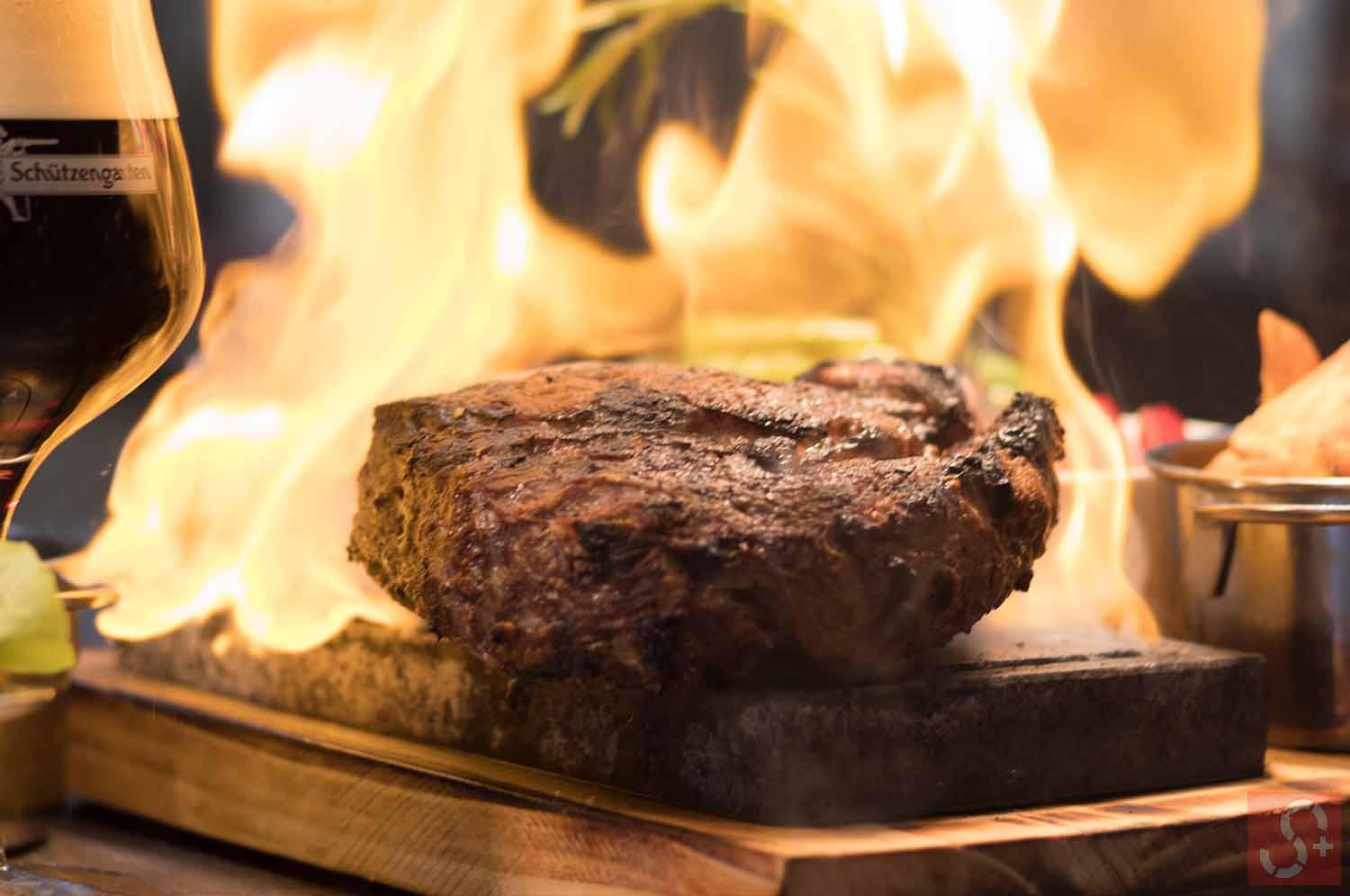For most home chefs and grill chiefs, there’s nothing more satisfying than preparing a good piece of steak, seared to perfection and full of juicy, delicious flavor that goes well with your favorite sides.
And most cuts of steak that you get from the market or the butcher usually come in cuts of around 1 inch in thickness. But what happens if you have a thicker steak? Most conventional cooking methods may cause you to burn thick steaks or 2 inches or more, making it inedible. But not to fear – there are a few solutions to this problem.
Considerations when cooking thick steak with burning it:
- Salt your steak
- Dry out your steak surface
- Use Indirect heat
- Rest your steak
- Tenderize your steak
Here are some things you can do to prepare your thick cuts of steak for the best cooking experience.
1. Salt your steak
Sprinkle some kosher salt generously over the entire surface of your steak. You don’t need too much, but just enough to coat both sides of your steak surface in a thin layer of salt. This is especially useful in a large cut of steak, as the salt seasons the steak while pulling moisture out of the inside of the meat.
2. Dry out your steak surface
Next, you’ll want to place your steak in the fridge, on an uncovered rack overnight whenever possible – otherwise, leave it for a few hours at least. This allows your steak to fully brine and for all the moisture to be completely drawn out by the salt.
3. Use Indirect heat
Most normal steaks are cooked grilled over a charcoal, wood, or gas fire. This is fine for regular or thin cuts of steak, but for thicker cuts of steak, this will only end up with a burnt, overcooked exterior while the insides remain raw and barely even medium-rare.
Wherever possible, try to use indirect heat to cook your thick cut of steak. This allows you to cook the entire piece of meat evenly, both inside and out. Most modern grills have an indirect heat mode that you can use to cook your thick steak on, and if you’re using a traditional grill, you can simply place your steak in an area of your grill that the fire doesn’t directly hit, but is still hot enough to cook it.
Then, using a meat thermometer, check that the inside of your steak reaches 160ºF, which means the inside is safe and is fully cooked.
It’s slower to cook this way, but it will result in a perfect thick steak every single time.
4. Rest your steak
No matter the thickness of your steak, it’s important to let your steak rest before you serve it. This allows the juices to settle and reabsorb into the meat, rather than spilling out all onto the cutting board when you cut it with your knife. This also ensures that your meat retains the delicious flavors of all the seasonings and juices when you eat it.
5. Tenderize your steak
Thick steaks can also handle a bit of tenderizing before cooking. Tenderizing your steak breaks down any tough muscle fibers that might cause your steak to become rubbery or chewy when cooked.
Using a meat mallet, you can break down those fibers to elevate the texture of the meat. Mix this with salting and seasoning, and you’ll end up with a cut of steak that is perfectly tenderized and seasoned.
How do you cook steak without burning oil?
One of the most common problems people face when cooking thick steak with oil is that they end up with black, smoky, and cruddy oil halfway through the cooking process. This means that the oil is burnt, and may be dangerous as it may contain carcinogens that are harmful to health.
How you can avoid this problem is to ensure that you always bring your oil to medium-high heat first, until it has a shimmery surface on the pan. Don’t use a very high heat, as you’ll be bringing your oil to smoking temperature prematurely.
Once your oil is heated up nicely under medium-high heat, place your steak inside the pan and flip your steak a couple of times until the internal temperature reads 135ºF. You should cook each side for approximately 30 seconds and not longer to avoid burning or uneven cooking.
Prevent burning butter when cooking steak
Cooking steak with butter gives you an ultimate sear and delicious crust that elevates the flavor and texture of your steak like no other. However, butter is a fat that has a very low smoke point – meaning that it burns very easily, even on medium-high heat.
The best way to cook your steak with butter is to think about finishing with butter rather than cooking with butter. What this means is you first start cooking your steak with a small amount of a high smoke point fat or oil, like ghee, light olive oil, or avocado oil.
After you achieve the first signs of searing on both sides of the steak, add in your whole butter and herbs, and baste your steak on medium-high heat to intensify the flavor inside your steak and achieve a darker, crispier sear on the exterior.
Pro tip: Sous vide it
If you have an immersion circulator handy in your home kitchen, you’re well equipped to tackle a thick steak without fear of burning it. The sous vide method perfectly cooks your entire steak, from edge to edge, to a consistent temperature.
In the sous vide method, you’ll seal up your thick cut of steak in a vacuum sealed bag, and then place the entire bag into a hot water bath that cooks your meat both inside and out. You then set the temperature and timing on the immersion circulator depending on how you want the doneness of your steak to be.
Once you’ve cooked it in sous vide, you can simply finish off your steak by searing it on a grill or a skillet, creating a delicious crust with butter and herbs and your preferred seasonings.
Photo altered by simplelifesaver.com | Photo attribution: Alexander Kovacs








